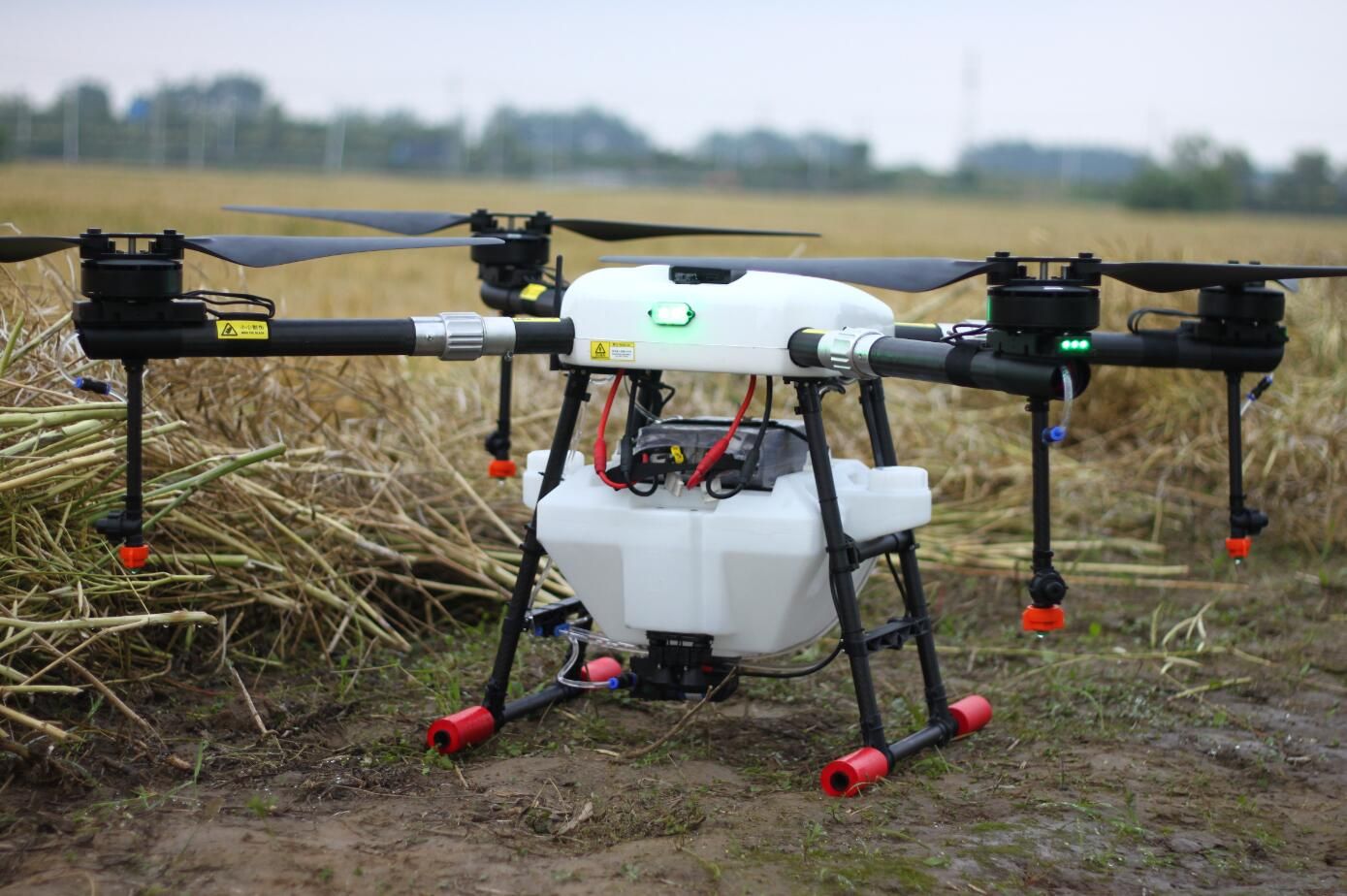Over 60 years old, exhausted under the hot and humid environment, wading through the muddy soil, carrying over 12 hours nearly 400 kg of solutions in a backpack sprayer to protect 1 hectare of rice. This is the hard reality of the average rice farmer in Asia.

No wonder it is getting harder and harder to find workers to do the job. The young generation does not want to take over this kind of work and we observe farmers’ average age getting higher. As a consequence fields are left unprotected against diseases and insects resulting in lower quality of rice and significant yield losses.
What if this job could be done in 10-15 min?
This sad picture has been fortunately changing since 2015 due to modern technology. A new type of drone called multi-rotor, powered by rechargeable batteries, was launched in China to apply crop protection products in fields. This unmanned aircraft, equipped with only a 5-10 liters tank can treat up to 1 hectare of rice in 10 to 15 minutes. This multi-rotor drone flies and lands autonomously, has an automatic filling tank designed to the exact field size, can trace the terrain and keep a constant height over the crop by virtue of a height sensor and recent models can detect and avoid obstacles during flight. Furthermore, these drones can fly individually or in coordinated groups, and are able to fly during both day and night.
Are 8-15 liters spray solution sufficient to treat 1 hectare of rice?
While there is the perception of high spray volumes being necessary to achieve sufficient crop coverage, this perception is not necessarily correct. Adjuvants in the product can if suitably designed contribute to ensure a good delivery of active ingredients at lower spray volumes, with the consequence that the combination of drone application with associated formulation technology could be a dramatic advance for farmers when it comes to spraying rice.

Will this technology stay in China and rice?
In fact, we already see how drones are having an impact. For instance, in 2016 already 9000 drones were in use in China, which treated 1.4 million hectares. It is estimated that China could cover 33 million hectares with 100K units of drones by 2020. They are without a doubt the leading country in drone technology today.
There are many reasons why this new technology is spreading so quickly. Together with the obvious gain in rice quality and its convenience, the application by multi-rotor drones is much faster, more homogenous and much safer compared to hand spraying.
Additionally, we have seen that the downdraught air-stream of the rotors pushes the plant canopy open and facilitates the spray droplets to reach not only the top but also the base of the plant thus increasing the efficiency of the spray and product efficacy.
It is expected that the success of this technology in China will motivate other countries to take it up. First followers are seen in Japan and Korea, with South East Asia and Latin America also showing much interest.
As farmers gain understanding of the advantages of this technology, we expect to incorporate the use of drones not only in rice but other crops such as corn, sugar cane, wheat, vegetables, banana, grapes and citrus for example.
Shaping the future of farming
Young people especially see the new business opportunity here and are increasingly offering drone spraying services. We are delighted to see how technology is engaging a new generation in agriculture and will hopefully reverse the trend of an aging population of farmers. Fly Dragon Aviation Tech. @Jason wen is fully engaged in this technology. The benefits it will bring to agriculture and farmers is one more way in which we are shaping the future of farming.
Contact: Fly Dragon Drone Tech.
Email: frank at dronefromchina.com
Add: NO. 9 Dayu Road PiDu distric, ChengDu 611730, China